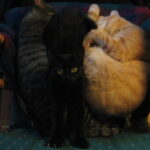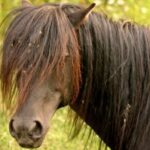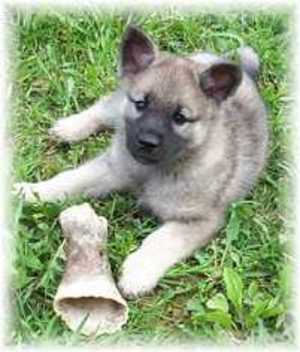When we think of mustangs, most of us think about a herd of free-ranging horses galloping across the plains, or perhaps a herd of horses kept by a tribe of Indians. While both of these images are true, there is more to them than that. They share an interesting history and also have a unique place in modern life. This resilient little horse is proving to be a versatile animal.
The original Spanish mustangs were brought to America by the Spanish Conquistadors during the 1500’s. The name mustang comes from mustengo, a Spanish word meaning feral or stray. These mustangs are commonly believed to be of Arabian, Barb, and Andalusian ancestry. From this mixture comes the ability to adapt to harsh climates and terrain, a compact body, and the long manes and tails. Some of these horses eventually got loose and were captured and tamed by Indian tribes. The discovery of these animals was a welcome change for the tribes, who had had to rely on dogs to haul their possessions and hunt on foot. Use of the horse also allowed the tribes to engage in warfare more effectively.
When settlers started moving westward during the 1800’s, they brought their own horses with them. Some of these horses, including Thoroughbreds and draft horses, contributed to mustang lines. Some of them mixed with mustangs by getting loose, and others were possibly stolen by Indians. The continued existence of the mustang was threatened when cattle ranching came to be widely practiced.
During the 20th century, wild mustangs were often rounded up and slaughtered, often being used in pet food. This threatened their numbers. In 1971, Congress passed the Wild Horse and Burro Protection Act, ensuring their survival. However, in 2005, the “Burns rider” allowed older mustangs and those that had been unsuccessfully put up for adoption three times to be sold for slaughter. This has angered many wild horse advocates.
Conservationists have been divided as to the actual place of mustangs in the ecological scene. Some feel that they’ve been around “in the wild” sufficiently long enough to qualify as wildlife, even though they are technically domestic animals. Others feel that since they’re actually feral animals, they aren’t a part of the natural ecosystem. When they must share rangeland with cattle and sheep, this becomes an important issue to consider.
The mustang has been a part of popular culture as well. Probably the most well-known depictions of the mustang are the book, movie, and TV series versions of My Friend Flicka and the movie Hidalgo, based on long-distance endurance racer Frank Hopkins. My Friend Flicka was written in 1941 by Mary O’Hara. The book was about a ten-year-old rancher’s son who takes an injured mustang filly for his own. A 1943 movie with Roddy McDowell was based on the book, as well as a 1950’s TV series. A 2006 movie starring Tim McGraw and Alison Lohan was based on this story, but featuring a girl as the main character.
Hidalgo is based on Frank Hopkins, an endurance racer from the late 1800’s and Hidalgo, his paint mustang. Hopkins was known as a wild mustang advocate. The movie centers around a race that Hopkins enters on the Arabian Peninsula, where his horse proves himself against some of the finest Arabian race horses. The historical accuracy of movie and whether Hopkins was even in such a race has been questioned. However, it’s a good story that brings the mustang breed to attention.
Today, the Bureau of Land Management (BLM) offers an adoption program for surplus horses and burros in BLM lands. The BLM has strong standards for those who desire to adopt an animal. Adoptive owners must follow all applicable laws regarding care, follow careful guidelines for housing the animal, and do not have the title transferred for a year. The title for the horse is only transferred after the BLM determines that care guidelines are being met. There are also many breeders now producing mustangs, many of which have been used as good working horses. The Kiger mustang is popular among breeders. Petfinder usually has many mustangs listed for adoption through horse rescue groups.
The BLM’s Adopt-a-Horse program, the popularity of the breed, efforts by breeders, and exposure of working mustangs will hopefully help keep this breed alive for generations to come.






